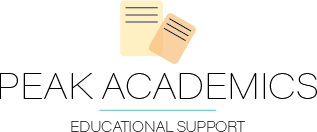As we enter 2025, families are trading their winter bells for school bells as many campuses will soon resume learning. Amidst the excitement of seeing missed friends and feeling refreshed from break, students are challenged with re-establishing routines, procedures, and recalling pre-break academics. However, just like the second half of an athletic game, the second half of school plays a crucial role in successful outcomes. In this case, the second semester impacts students’ educational success as foundational skills expand into new concepts and connections. This extended learning may feel daunting for students who are struggling in content areas, or mastering specific skills. Students’ feelings about school may shift throughout the second semester based on their strengths. However, there are a variety of strategies you can use to help your child persevere through the end of the school year.
Beginning of Semester Two
Routines: Most likely children had flexible routines during their winter break. Many children will need help adjusting back to their normal school schedule and after-school routine. It may be helpful to practice these routines a day before children go back to school to ease feelings of uncertainty.
Teacher Communication: The beginning of semester two, or end of semester one, is a great time to discuss students’ progress with their classroom teachers. Be sure to ask questions if you do not understand something, need additional resources, and to clarify the end of the year expectations.
Goal Setting: If you have already set goals for this school year, this is a perfect time to review them to set positive intentions for the upcoming semester. It could also be a great time to explore new year’s resolutions related to school, executive functions, or social-emotional skills.
Middle of Semester 2
Testing Season: Second semester is typically considered the “testing season” as many students take state-required, school-based, diagnostic and/or classroom-based assessments — all of which can contribute to feelings of anxiety, discomfort, and internal pressure. Be sure to reach out to your child’s teacher for more information regarding any upcoming tests. Test language can be tricky and confusing, so practicing test taking skills at home may alleviate test anxiety and improve memory and retention.
Goal Setting: Be sure to review any goals, or resolutions, created. If you child has met their goal, challenge them to create a new goal, or extend their existing goal. For example, if they have already met their goal to read 75 words per minute, you can increase their goal to 100 words per minute.
Motivation: Many students have a decrease in motivation as the summer months approach. You can help students avoid these feelings by using organizers to keep track of important deadlines, incorporate brain breaks or mindfulness activities, and take time to rest and relax. Consider practicing foundational skills with games, puzzles, or online educational programs.
End of the Year
Burnout: Avoiding the end-of-year burnout is critical for student’s success. Many of the end-of-year skills taught in classrooms are essential for a successful start to the next school year. Additionally, teachers may give assessments to determine students’ growth over the course of the year or semester. Incentives, homework choice boards, daily check-ins, and other motivation strategies can be used to help students persevere.
Summer Activities: Second semester report cards can give a lot of information regarding skills students should continue to practice throughout the summer. You can use this information to talk with your child about their progress and expectations for summer learning. By using report cards as an accountability tool, students will take ownership in their learning and put forth their best effort.
While many students may feel refreshed after their winter breaks, the demands of the second semester may quickly have an influence on their perception and attitudes regarding the end of the school year. However, students that implement strong routines and approach semester two with confidence may avoid the end-of-the-year burnout. Be mindful that some students may feel a variety of positive and negative emotions as school begins. As you child explores their emotions, you can help them regulate by establishing healthy outlets, an open line of communication, and reminding them that all feelings are valid.
Written by Ami Z.

